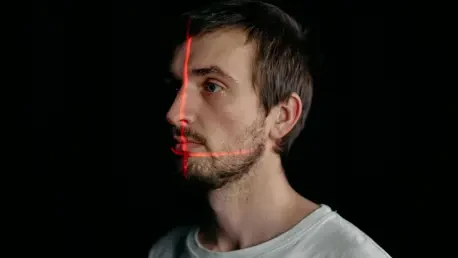In a city already under intense scrutiny for its political and social dynamics, Hong Kong’s latest push to expand its surveillance infrastructure has ignited a firestorm of debate about privacy and security. Authorities have unveiled plans to install tens of thousands of AI-powered surveillance cameras, equipped with facial recognition technology, aiming to align the city’s monitoring capabilities with those of mainland China. This ambitious initiative, driven by the goal of enhancing national security and crime prevention, promises to revolutionize public safety measures. However, it also raises profound questions about the erosion of personal freedoms and the potential for misuse of such invasive technology. As Hong Kong moves forward with this plan, the tension between safeguarding citizens and protecting their rights becomes a critical issue to explore, drawing attention from both local residents and international observers concerned about the implications of pervasive monitoring.
Enhancing Security Through AI Technology
Hong Kong’s security chief, Chris Tang, has championed the expansion of the city’s surveillance network as a necessary step to bolster public safety. Currently, nearly 4,000 CCTV cameras operate under the SmartView program, a police initiative focused on crime-fighting. Legislative documents reveal plans to scale this number to an astonishing 60,000 by 2028, marking a dramatic increase in monitoring capacity. The AI technology embedded in these cameras already assists in crowd monitoring and license plate recognition, with future applications expected to include tracking individuals, particularly criminal suspects. Police reports underscore the effectiveness of SmartView, crediting it with solving over 400 cases and facilitating 787 arrests since its inception. This data suggests a tangible impact on crime detection and prevention, positioning the technology as a powerful tool for law enforcement in maintaining order within a densely populated urban environment.
Beyond the numbers, the introduction of real-time facial recognition capabilities, slated for implementation by the end of this year, signals a significant leap in surveillance sophistication. This advancement will enable authorities to identify and track individuals in public spaces almost instantaneously, a feature that could prove invaluable during large-scale events or in high-crime areas. Proponents argue that such technology is indispensable in a world where threats to national security are increasingly complex and multifaceted. By aligning with practices seen in mainland China, where AI surveillance is widespread, Hong Kong aims to stay ahead of potential risks. Yet, while the benefits of enhanced security are evident, the rapid adoption of these tools also prompts a deeper examination of how they might reshape societal norms and individual expectations of privacy in public spaces.
Privacy Concerns and Ethical Dilemmas
As Hong Kong accelerates its surveillance expansion, significant concerns about privacy and the potential for abuse of power have emerged among critics and rights advocates. The deployment of AI-driven facial recognition technology, capable of mass monitoring, grants authorities unprecedented access to personal data, often without clear boundaries or consent from the public. Experiences from other regions, such as Britain, highlight the risks of unchecked surveillance, where errors like false matches have led to wrongful arrests. Such incidents underscore the fallibility of even the most advanced systems and raise alarms about the consequences of relying heavily on technology for law enforcement. In Hong Kong, the absence of robust regulations governing AI use by police further amplifies these worries, leaving a gap in accountability that could permit overreach or misuse.
Compounding these issues is the lack of independent oversight and transparency in the procurement and deployment of surveillance technology. Eric Lai, a Senior Fellow at the Georgetown Center for Asian Law, has pointed out that the current legal framework may not adequately protect human rights or prevent potential abuses. The silence from Hong Kong’s privacy watchdog regarding its involvement in the planning process adds another layer of uncertainty, as it remains unclear whether sufficient safeguards are in place to address public concerns. Meanwhile, contrasting approaches, such as the European Union’s Artificial Intelligence Act, which restricts real-time biometric identification in public spaces for law enforcement with few exceptions, highlight a global divergence in handling such technology. This disparity prompts questions about whether Hong Kong’s approach prioritizes security at the expense of individual freedoms, fueling an ongoing debate about ethical boundaries.
Striking a Balance in a Surveillance Era
The trajectory of Hong Kong’s surveillance expansion reflects a broader global trend where technology increasingly intersects with governance and public safety. While the initiative mirrors practices in mainland China and aims to fortify national security, it also places the city at a crossroads between maintaining order and preserving personal liberties. Critics caution against the erosion of privacy, emphasizing that without stringent oversight, such systems risk becoming tools of oppression rather than protection. The potential for errors, coupled with a lack of clear regulatory mechanisms, underscores the need for a balanced approach that considers both the benefits of AI in crime prevention and the fundamental rights of citizens. This delicate balance remains elusive as the city navigates its complex political landscape.
Looking back, the rollout of AI surveillance in Hong Kong sparked intense discussions about how societies reconcile technological advancements with ethical imperatives. As the program unfolded, it became evident that addressing privacy concerns required more than just policy promises—it demanded actionable frameworks. Moving forward, establishing independent oversight bodies, transparent guidelines for technology use, and public consultation could serve as vital steps to mitigate risks. Additionally, learning from global models that prioritize rights alongside security might offer valuable insights. The challenge for Hong Kong, and indeed for any region adopting similar measures, lies in ensuring that the pursuit of safety does not overshadow the principles of freedom and trust that underpin a just society.









